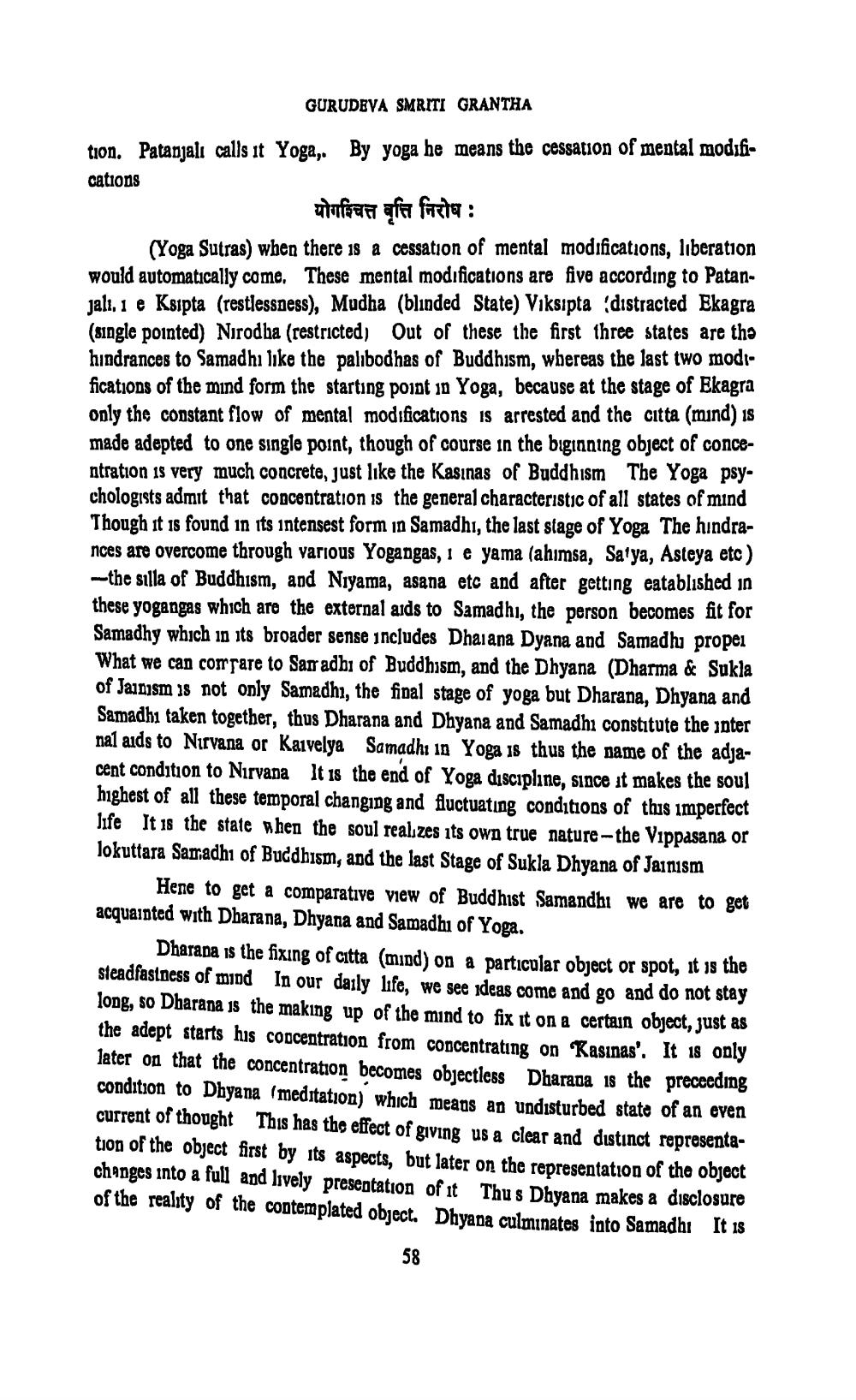________________
GURUDEVA SMRITI GRANTHA
tion. Patanjali calls it Yoga,. By yoga he means the cessation of mental modifi
cations
योगश्चित्तवृत्ति निरोध :
(Yoga Sutras) when there is a cessation of mental modifications, liberation would automatically come. These mental modifications are five according to Patanjali. 1 e Ksipta (restlessness), Mudha (blinded State) Viksıpta (distracted Ekagra (single pointed) Nirodha (restricted) Out of these the first three states are the hindrances to Samadhi like the palibodhas of Buddhism, whereas the last two modifications of the mind form the starting point in Yoga, because at the stage of Ekagra only the constant flow of mental modifications is arrested and the citta (mind) is made adepted to one single point, though of course in the biginning object of concentration is very much concrete, just like the Kasinas of Buddhism The Yoga psychologists admit that concentration is the general characteristic of all states of mind Though it is found in its intensest form in Samadhi, the last stage of Yoga The hindrances are overcome through various Yogangas, ie yama (ahimsa, Satya, Asteya etc) -the silla of Buddhism, and Niyama, asana etc and after getting eatablished in these yogangas which are the external aids to Samadhi, the person becomes fit for Samadhy which in its broader sense includes Dhaiana Dyana and Samadhi proper What we can compare to Samadhi of Buddhism, and the Dhyana (Dharma & Sukla of Jainism is not only Samadhi, the final stage of yoga but Dharana, Dhyana and Samadhi taken together, thus Dharana and Dhyana and Samadhi constitute the inter nal aids to Nirvana or Kaivelya Samadhi in Yoga is thus the name of the adjacent condition to Nirvana It is the end of Yoga discipline, since it makes the soul highest of all these temporal changing and fluctuating conditions of this imperfect life It is the state when the soul realizes its own true nature-the Vippasana or lokuttara Samadhi of Buddhism, and the last Stage of Sukla Dhyana of Jainism
Hene to get a comparative view of Buddhist Samandhi we are to get acquainted with Dharana, Dhyana and Samadhi of Yoga.
Dharana is the fixing of citta (mind) on a particular object or spot, it is the steadfastness of mind In our daily life, we see ideas come and go and do not stay long, so Dharana is the making up of the mind to fix it on a certain object, just as the adept starts his concentration from concentrating on Kasinas'. It is only later on that the concentration becomes objectless Dharana is the preceeding condition to Dhyana (meditation) which means an undisturbed state of an even current of thought This has the effect of giving us a clear and distinct representation of the object first by its aspects, but later on the representation of the object changes into a full and lively presentation of it Thus Dhyana makes a disclosure of the reality of the contemplated object. Dhyana culminates into Samadhi It is
58




